Fibre Analyses of Dunhuang Documents in the British Library
Agnieszka Helman-Wazny
Institute for the Study, Conservation and Restoration of Cultural Heritage Nicolaus Copernicus University in Torun.
Materials
Six objects were studied for fibre composition from Tibetan collection of the British Library, UK.
Methods
Transmitted light microscopy with polarized light was used to analyze samples from museum objects for fibre composition. This method makes it possible to identify the type of fibres present in the pulp. Many bast fibres in highly beaten pulp were, however, difficult to identify, because fibre produced by stamping and drying during the papermaking process can change its shape. Fibres in historic papers are difficult to identify. Different degrees of deterioration of the fibre over time is the main problem. In the aging process, the morphology of the fibre, the dimensions, the shape and the width of the lumen, can change. The morphology of fibres in a highly degraded state may be impossible to recognize. In the identification of the fibre in pulp, attention was paid to the following features: the general shape of the fibres, dimensions of the fibres (mainly width), cross-markings, types and dimensions of the lumen, the shapes of the ends of the fibre (if any), irregularities in the fibre walls, the kind and size of vessel elements (if any). The fibre atlas and key for identification found in literature was used as a reference for identification.
Preparation of Samples
The sample was divided into small pieces, placed in a small beaker, immersed in distilled water and boiled in an autoclave. The water was decanted and the samples drained. About a 0.2g portion of paper was defibred on a glass slide. The fibres were then treated with Herzberg stain applied to the fibre field on the slide, which was then covered with another piece of glass.
Observation: Light and Polarized Microscopy
The stained material was observed under the microscope with transmitted light (OLYMPUS BX 60) and , further, in polarized light. The slide was examined for different fibres, with attention given to their color after staining and their morphology. The results were compared with the reference material. A Sony N50 camera was attached to the microscope, and the computer software 'Image Pro' was used to process the photographs, which were taken in magnification of 60x, 150x, 300x 400x, and 600x.
Results
1) IOL Tib J 612 – paper composed of ramie fibres, jute fibres (?) stained yellow with Herzberg
VIEW THIS ITEM IN THE IDP DATABASE.
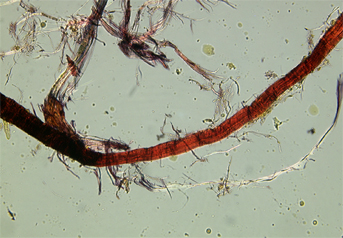
1.1: Ramie fibre stained with Herzberg observed in polarized light in magnification 300x.
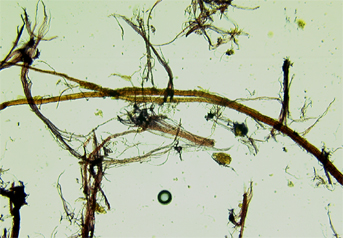
1.2: Jute (?) fibres stained yellow with Herzberg observed in polarized light in magnification 150x.
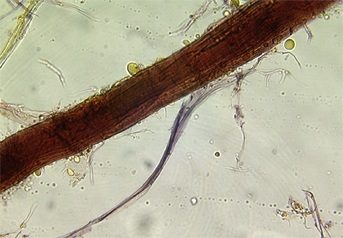
1.3: Ramie fibre stained with Herzberg observed in polarized light in magnification 600x. Fibre is characterized by clear longitudinal stratification, wide lumen and narrow fibre walls. Cross-markings is clearly visible in polarized light.
2) IOL Tib J 241 – paper composed of paper mulberry fibres with possible addition of hemp.
VIEW THIS ITEM IN THE IDP DATABASE.
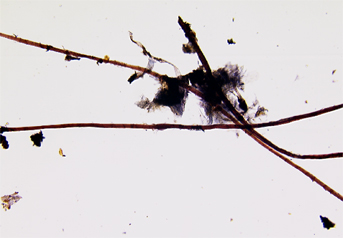
2.1: Paper mulberry fibres stained with Herzberg observed in polarized light in magnification 150x.
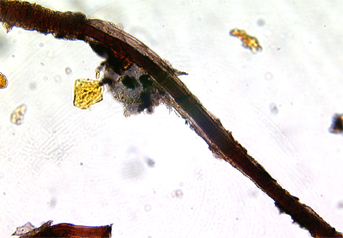
2.2: Paper mulberry fibre enveloped in transparent membrane stained with Herzberg observed in polarized light in magnification 300x.
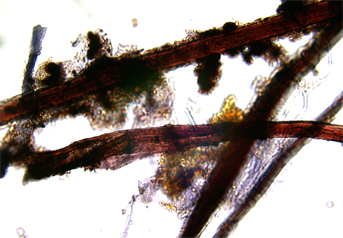
2.3: Paper mulberry fibres stained with Herzberg observed in polarized light in magnification 600x.
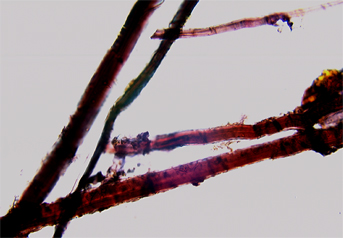
2.4: Paper mulberry fibres stained with Herzberg observed in polarized light in magnification 600x. (Hemp addition is possible).
3) IOL Tib J 232(A) – paper composed of degraded fibres of paper mulberry with possible addition of ramie.
VIEW THIS ITEM IN THE IDP DATABASE.
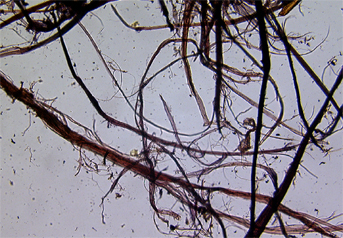
3.1: Paper mulberry and ramie (?) fibres stained with Herzberg observed in polarized light in magnification 150x.
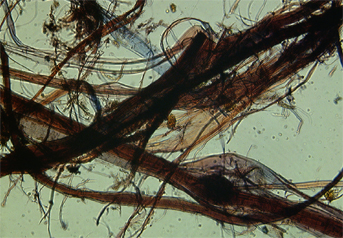
3.2: Paper mulberry and ramie (?) fibres stained with Herzberg observed in polarized light in magnification 600x.
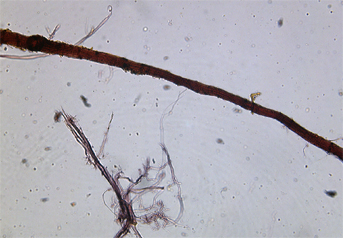
3.3: Paper mulberry fibre stained with Herzberg observed in polarized light in magnification 300x.
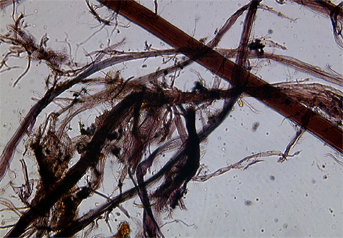
3.4: Paper mulberry and ramie (?) fibres stained with Herzberg observed in polarized light in magnification 300x.
4) IOL Tib J 229 – paper composed of ramie fibres
VIEW THIS ITEM IN THE IDP DATABASE.
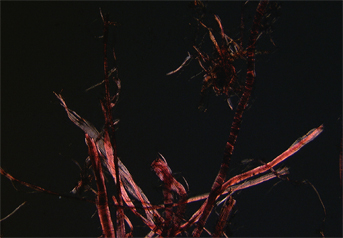
4.1: Ramie fibres stained with Herzberg observed in polarized light in magnification 150x.
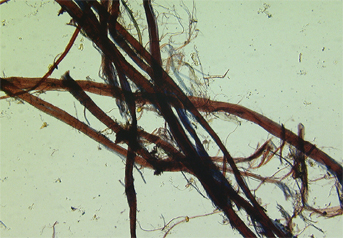
4.2: Ramie fibres stained with Herzberg observed in polarized light in magnification 150x.
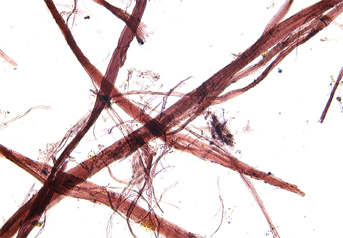
4.3: Ramie fibres stained with Herzberg observed in polarized light in magnification 300x.
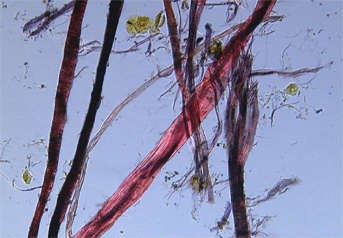
4.4: Ramie fibres stained with Herzberg observed in polarized light in magnification 300x.
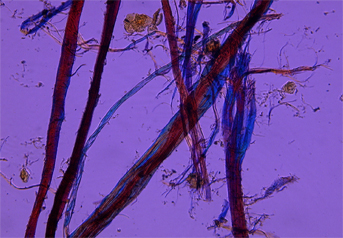
4.5: Ramie fibres stained with Herzberg observed in polarized light in magnification 300x.
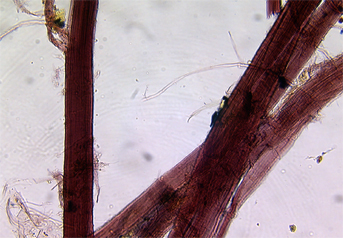
4.6: Ramie fibres stained with Herzberg observed in polarized light in magnification 600x.
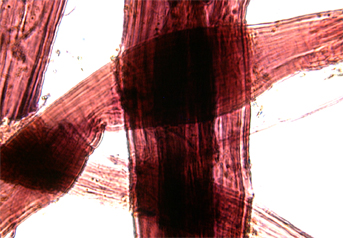
4.7: Ramie fibres stained with Herzberg in magnification 1200x.
5) IOL Tib J 1357(B) – paper composed of ramie fibres.
VIEW THIS ITEM IN THE IDP DATABASE.
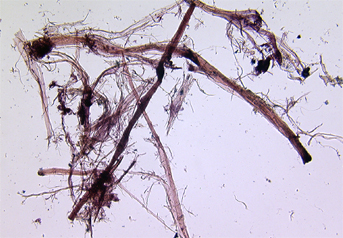
5.1: Ramie fibres stained with Herzberg in magnification of 150x.
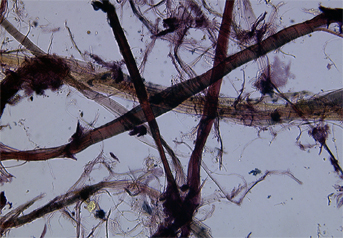
5.2: Ramie fibres stained with Herzberg observed in polarized light in magnification 300x.
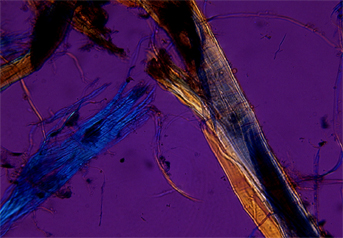
5.3: Ramie fibres observed in polarized light in magnification 600x.
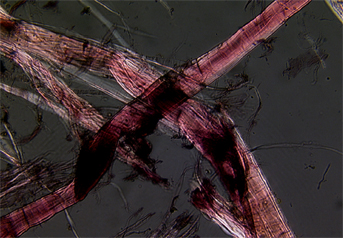
5.4: Ramie fibres stained with Herzberg observed in polarized light in magnification 600x.
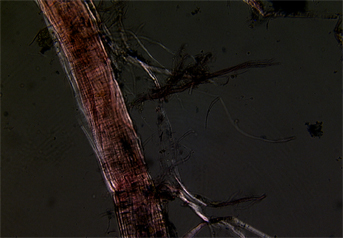
5.5: Ramie fibres stained with Herzberg observed in polarized light in magnification 600x.
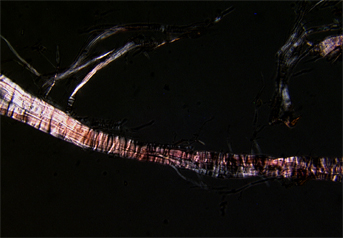
5.6: Ramie fibre stained with Herzberg observed in polarized light in magnification 600x.
6) IOL Tib J 354 – paper composed of ramie fibres.
VIEW THIS ITEM IN THE IDP DATABASE.

6.1: Ramie fibres stained with Herzberg in magnification 150x.
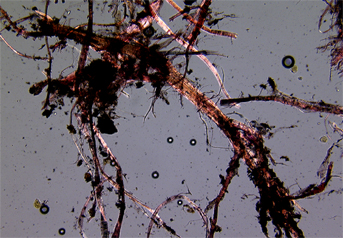
6.2: Ramie fibres stained with Herzberg observed in polarized light in magnification 150x.
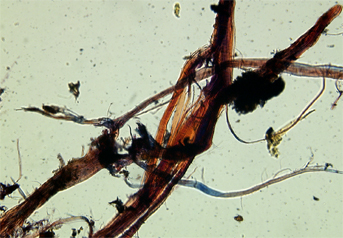
6.3: Ramie fibres stained with Herzberg observed in polarized light in magnification 300x.
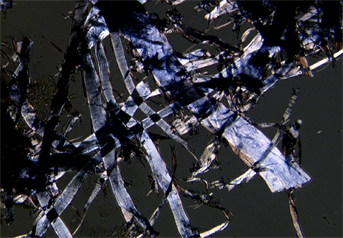
6.4: Ramie fibres stained with Herzberg observed after 24 hours in polarized light in magnification 150x.
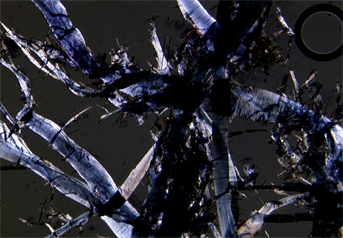
6.5: Ramie fibres stained with Herzberg observed after 24 hours in polarized light in magnification 150x.
Characteristics of Fibres in Dunhuang Documents
Ramie Boehmeria sp.
Ramie was mainly found in documents from Dunhuang. Fibres were stained orange-red with Herzberg. The most characteristic was ribbon-like placing, what is connected to wide lumen and flat shape of fibres, which have a tendency to twist or tangle together. Cross-section of fibres is more close to the flat ribbon cross-section than to the circular. The lumen and fibre walls have many variations in size These even resemble cotton fibre placing which are also flatter in shape than others. But the closest to Ramie in identification are hemp fibres, which when damaged and flattened by papermaking technology could be very close to ramie fibres in historic papers. Ramie is distinct by enormous thickness of fibres and clearly visible longitudinal stratifications of the wall, as well as many cross markings. The rarely found ends were mostly rounded. Many fibres were damaged in the pulp and broken to longitudinal stratifications, which can make it difficult to distinguish between separate fibres and bounds of fibres. In fibres in such a state the primary wall, or fragments of parenchyma cells were visible and these were similar to damaged fibres of paper mulberry (paper mulberry fibres seem to be wider, when damaged). The membrane-like material attached to ramie fibres resembling primary wall of paper mulberry is the main feature allowing the identification of those fibres
Paper mulberry Broussonetia sp
Paper mulberry was identified mostly in two samples from Dunhuang documents (IOL Tib J 241 & 232). After staining with Herzberg the fibres of paper mulberry were stained with reddish brown and pale purple color. Blunted fibre ends were found. Lumen was marked but interrupted at intervals. Cross-markings were clear but irregular. The transparent membrane identified as a primary wall (stained by Herzberg with violet to bluish purple) is clearly visible on all pictures. This transparent membrane usually envelops fibre. In historical papers, membrane was often torn on tested slides into small pieces or often separated from fibres as a ribbon. In some slides (vol. 69 f. 9) membrane was found only in a small quantity, and in such a cases the addition of hemp fibres should be considered. Condition of membrane depends on used technique and the quality of raw material. This membrane (primary wall) associated with paper mulberry fibres is usually considered as the most characteristic feature. This element exists in other species but is not as clearly visible there as in paper mulberry; the diameter of it is visibly bigger than diameter of the fibre wall. It was possible to find fibre endings were possible to find during the observation.